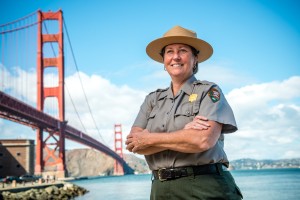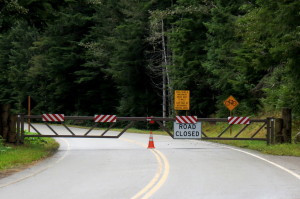Two air tour operators, San Francisco Seaplanes and San Francisco Helicopters, have been granted Interim Operating Authority to provide low-flying air tours over the Golden Gate National Recreation Area and Point Reyes National Seashore. Meanwhile, the Federal Aviation Administration and the National Park Service are in the process of developing a long-term Air Tour Management Plan (ATMP) for these parks, and the deadline for public comment during the project’s preliminary phase has been extended to October 21. Some environmentalists have protested that air tours have no place in the parks, though tour operators say they offer access to people who might not otherwise see the parks.
“We believe helicopters and low-flying sea planes are wholly incompatible with national parks and wildlife experiences, and should be completely prohibited,” says Amy Trainer, executive director of the Environmental Action Committee of West Marin. She says the air tours will affect wildlife and irreparably damage the parks’ soundscape. Crashing waves will give way to the growl of engines and the whop-whop-whop-whop of rotors.
Trainer is critical not only of the outcome of the process, but also of the process itself. She asserts that due to the extreme significance and fragility of the parks, the FAA should complete a full Environmental Impact Statement, as opposed to the less-detailed Environmental Assessment currently in progress. Moreover, she claims that the interim flight authority’s baseline of 5,000 is based on inflated and unsubstantiated numbers provided by the air tour operators.
“Avoidance is the only way to mitigate,” says Trainer. “I am not willing to compromise. There is no mitigation.” She sees this issue in a larger context as well. “At a time of climate change,” she explains, “we should be encouraging recreation without the use of fossil fuels.”
Not surprisingly, the air tour operators see things differently. “We provide access to the park to people that don’t have the physical ability or time to see it any other way,” says Steve Price, owner of San Francisco Seaplane. “The intent of the ATMP is to establish guidelines. This has worked successfully in Hawaii and in the Grand Canyon. It is an evolving process.”
With regards to sound mitigation, Price explains that the level of sound generated by a small airplane largely depends on the rotation speed of its propellers. In the past, his company flew Cessna 185s, whose propellers spin at 2,850 rotations per minute (RPM). However, they now fly de Haviland Beavers, which spin much more slowly at 1,900 RPM. And the Beavers have been outfitted with three-bladed propellers, which, according to Price, are 30 to 40 percent less noisy than four-bladed propellers.
Where, whether, and when those aircraft can fly will be at the heart of the planning process. “Alternatives with different flight routes, altitudes, or number of operations will be developed to minimize impacts, and other mitigation measures will be looked at if necessary,” Ian Gregor, Public Affairs Manager of the FAA Pacific Division, wrote in an email. “The FAA and NPS will also consult with various resource agencies, including the U.S. Fish and Wildlife Service and the National Marine Fisheries Service, to identify potential impacts to wildlife. The FAA and NPS will consider every public comment we receive during the ATMP development process.”
A key question in this debate is “Whose national parks?” Trainer answers this question emphatically and categorically: “National parks are for people. Not for private commercial use.”
A final resolution to this question may be months or even years in the offing. After the current “scoping” and comments phase concludes, the FAA will synthesize the opinions and information gathered, and generate a list of alternatives. Once again, public and agency input will be requested. Subsequently, the agency will issue a Draft Environmental Assessment and a Draft ATMP, which will be open for public comment as well. Eventually, the FAA will issue a final Environmental Assessment and a final ATMP based on the “preferred alternative,” which will designate flight routes and operating parameters. After an official Record of Decision, the FAA will translate the ATMP into specific rules.
Meanwhile, at any stage of the process, opponents of the air tours may initiate litigation. Despite the complex bureaucratic process, time remains for citizens all along the political and environmental spectrum to have their voices heard on this issue.
John McClelland, owner of San Francisco Helicopter was out of town and not reachable for comment on this article.
More information about this issue can be found on the FAA website. You can comment online here. Or comment by paper mail to: Keith Lusk, Special Programs Staff, Western Pacific Region. Federal Aviation Administration. P.O. Box 92007. Los Angeles, CA. 90009-2007.

.jpg)



